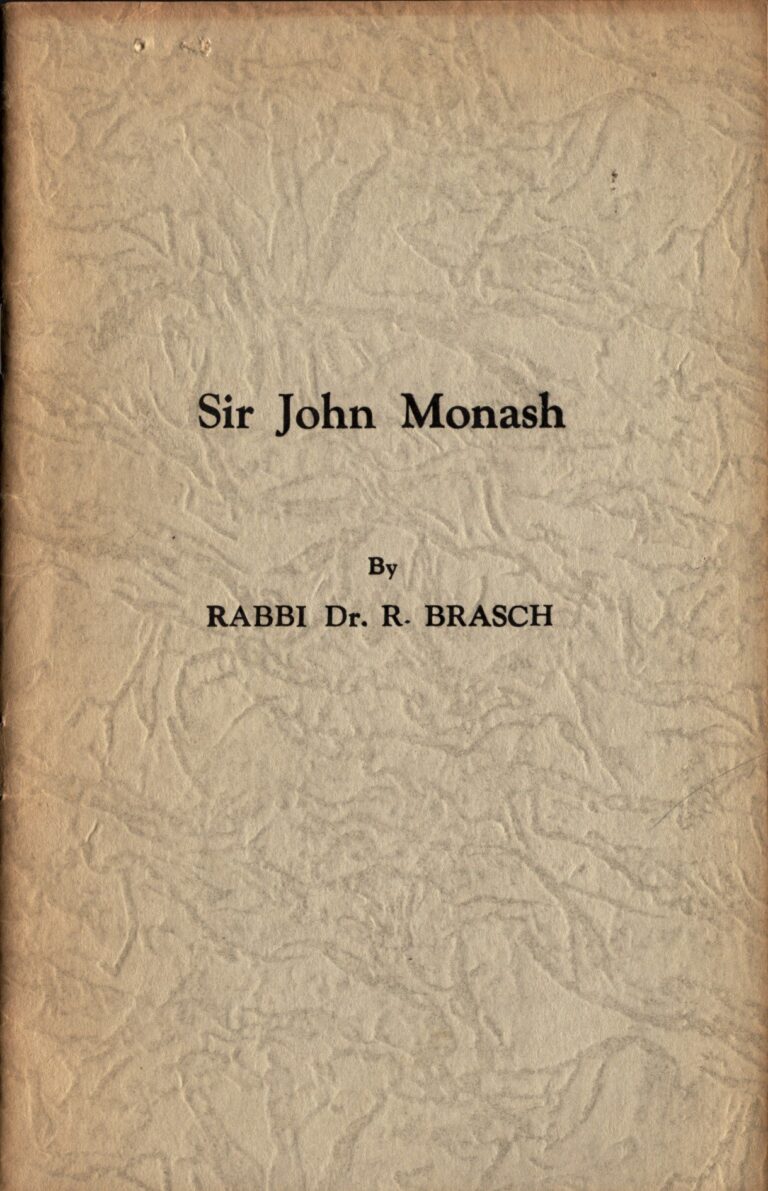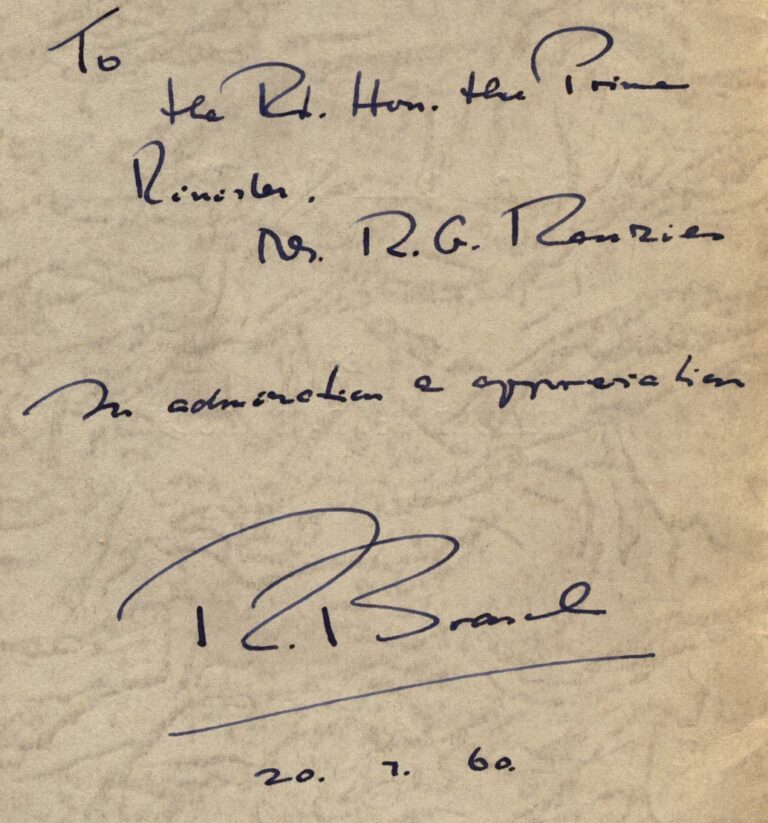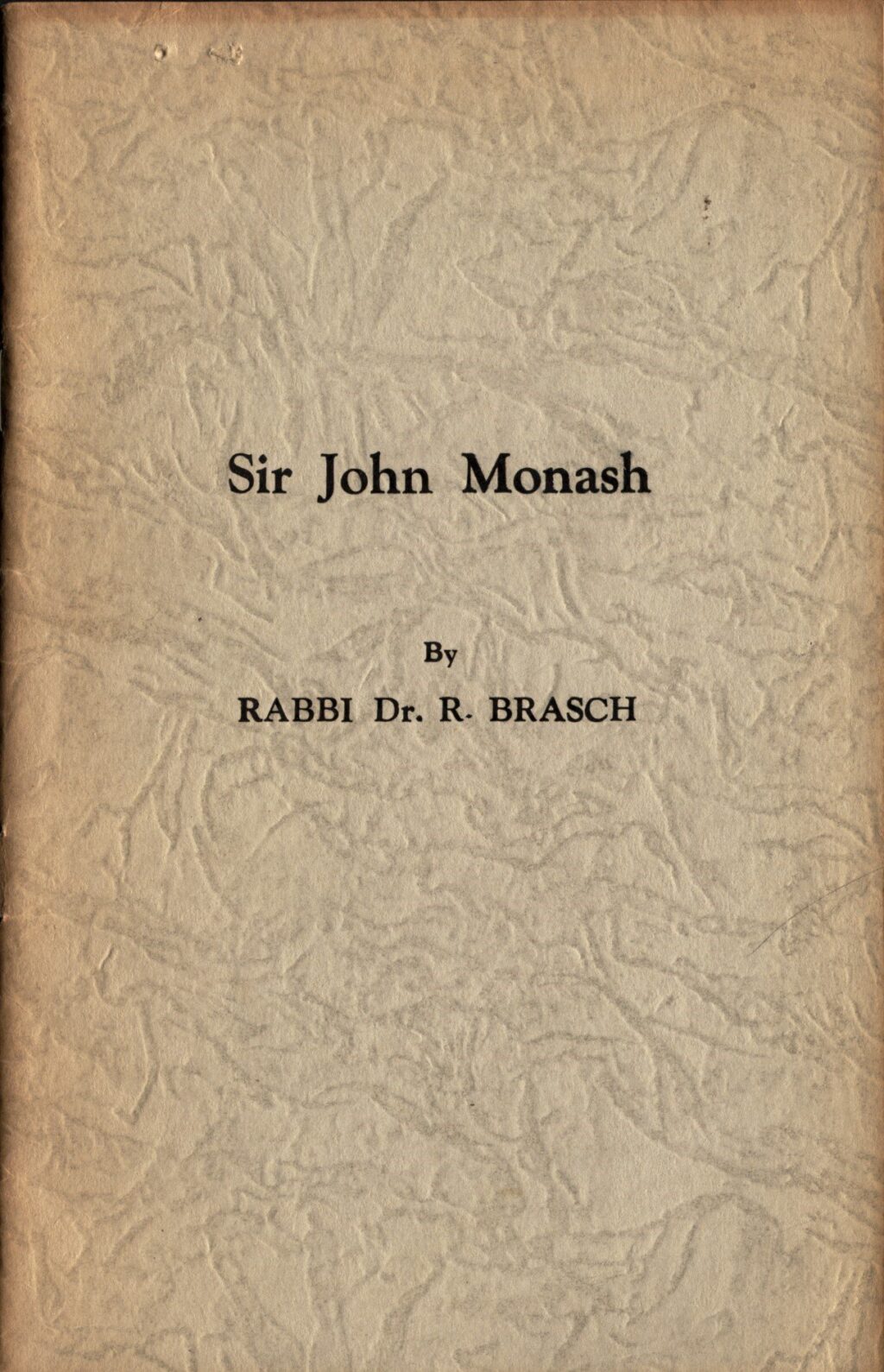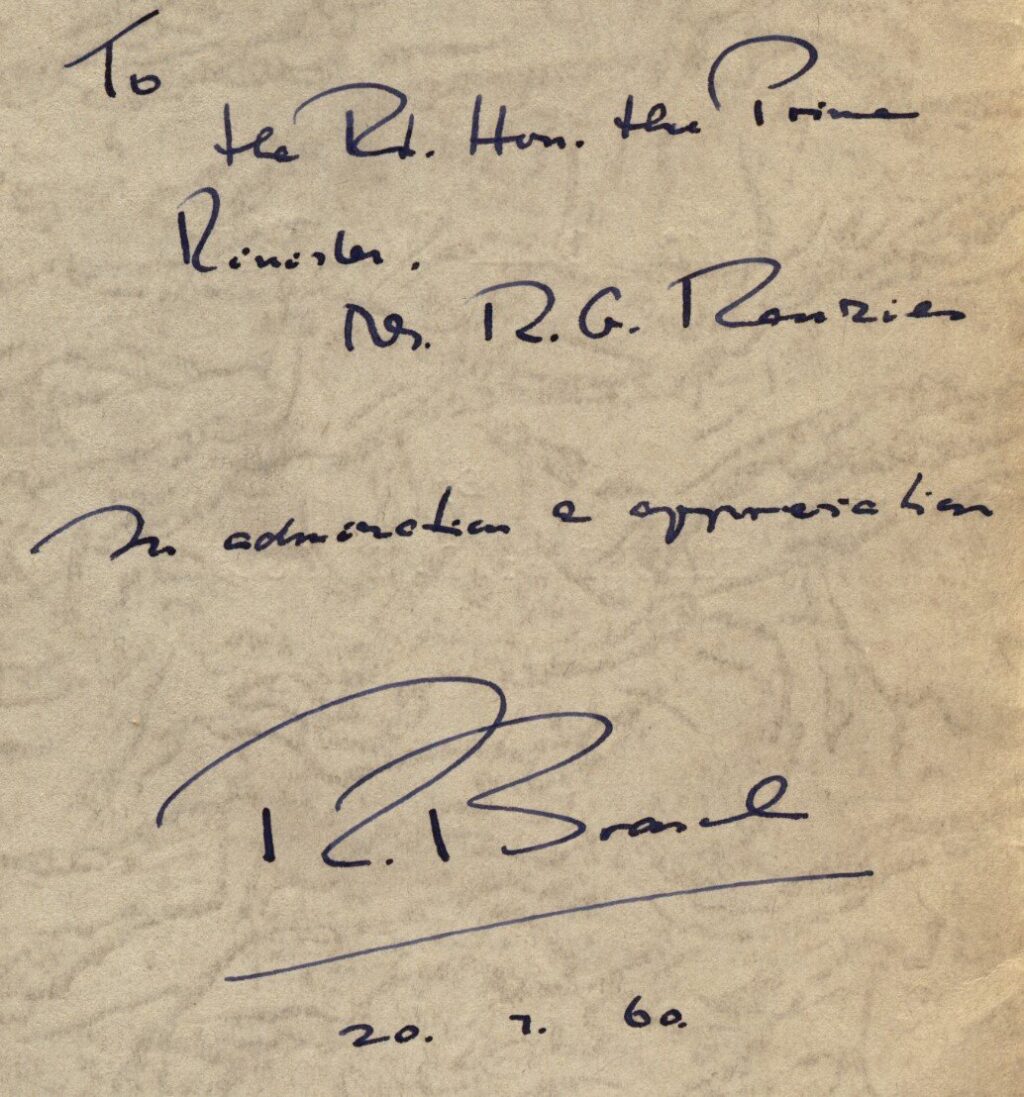R. Brasch, Sir John Monash (1960)
Rudolph Brasch AM OBE was a notable rabbi and prolific author of 37 books.
Born in Germany in 1912, Brasch was a student at the University of Berlin when the Nazis came to power in 1933. He stayed on to complete his PhD, but when a public talk on ‘Power Politics and Religion in the Bible’ gained the attention of the Gestapo, Brasch decided it was time to flee his homeland. He applied for a position at the North London Liberal Synagogue, the ‘spiritual home’ of Reform Jewry in Britain, where he survived the war and in 1948 was invited to become a rabbi for a Reform congregation in Springs, South Africa. However, once again the political situation proved impossible to bear, and Brasch instead moved on to Sydney’s Temple Emanuel in Woollahra, eventually becoming the ‘father’ of modern liberal Judaism in Australia.
Menzies was a keen promoter of religious tolerance who received considerable support from Australia’s Jewish community, and he became well acquainted with Brasch who by the 1950s had developed both a national and an international prominence. In 1958 Menzies publicly backed Brasch’s proposal to establish a society for the study of religions, and later in 1960 when Brasch went on a world tour he brought with him a message from the Australian prime minister ‘expressing his deep appreciation for the work of the Jewish people’. After Menzies retired, Brasch would even give a lecture at Temple Emmanuel discussing the former’s memoir Afternoon Light.
Sir John Monash was Brasch’s biography of another prominent Australian Jew, which he sent to Menzies with the inscription ‘To the Rt. Hon. the Prime Minister. Mr R.G. Menzies. In admiration & appreciation. R. Brasch, 20.7.60’
Monash had won great fame as a highly successful general during the First World War, whose success became the object of considerable national pride. He had subsequently been a towering figure in Melbourne until his death in 1931, and Menzies quite naturally had a great admiration for him. As prime minister, Menzies helped to unveil the grand equestrian statue of Monash near Melbourne’s Shrine of Remembrance in 1950, and he was also directly involved in setting up a university named in Monash’s honour. Indeed, the two most prominent buildings at Monash in its early years were named after the general and the PM, and when Menzies opened the latter, he reflected:
‘I just want to say a word, if I may, about that very great man after whom this University is named. He was never involved in politics and therefore, perhaps, he escaped the barbed tongues of undergraduates, I am perfectly certain that nobody would ever have dreamed of referring to a building with which Sir John Monash was associated as “Jack’s Shack” (Laughter) but I am told that already the ungodly in this University are referring to this as “Ming’s Wing” (Laughter) But, Sir, the naming of this university, this was a positive inspiration. One of the greatest of Australians of all time – wonderful engineer, a famous and tremendous soldier, a scholar in his own right, a great expert in many fields of life and an advocate, not only an advocate of good causes, but stopping at the word “advocate” one of the greatest advocates I ever listened to in my life; a man who understood the art of persuasive speech, the art of clear speech, who used no jargon but who went clear to the point, persuasively to the point, with effects that I had the opportunity of witnessing in my own political life more than once. And, Sir, because the University is named after this great and famous man, I feel that a very great honour, even indifferently earned, has been conferred upon me to have my name associated with one school of study in the University named after him. It will always be a source of immense pleasure and pride to me and to my family and to my descendants.’
You might also like...
Sign up to our newsletter
Sign up for our monthly newsletter to hear the latest news and receive information about upcoming events.





